What’s happened after THAT summer in Russia?
It is fair to say that Cheryshev thrust himself into the mainstream football conscience during his home nation’s World Cup in the summer of 2018. He finished the tournament with four goals, including a rocket in the quarter-finals against eventual finalists Croatia. However, instead of capitalising on his momentum gained throughout the tournament, Cheryshev seems to have faded from Russia’s talisman to barely hitting 2,000 minutes of league playing time for a Valencia team battling Getafe for a Champions League spot. This begs the question, should he have fallen out of the mainstream consciousness and is there untapped potential? The numbers seem to suggest so.
Expected assists – what’s all the fuss about?
Expected assists is the first place for us to start when investigating Cheryshev’s performances this season. Expected assists (xA) are very much like xG, how many assists can a player expect to register. If a player is underperforming their xA, it can be inferred that they are creating chances for their teammates which are being squandered, this is where we can investigate whether there is untapped potential within a player.
When looking at Cheryshev’s xA in the La Liga campaign it can be seen that he is the top performer within the Valencia side. The Russian, 28, has registered an xA of 7.16 with only two translating to actual assists, his nearest contender Dani Parejo registered an xA of 5.94. Now at this stage, the numbers do not look astounding but when we factor in minutes played, this is where Cheryshev’s creativity is highlighted. The Russian has played a total of 1,811 minutes in comparison to 3,057 for Parejo, this means Cheryshev has recorded an xA of 0.36 per 90 minutes and Parejo less than half of that at 0.17 per 90 minutes.
Having a 36% chance of registering an assist is an impressive feat, but how does it relate to the rest of La Liga?
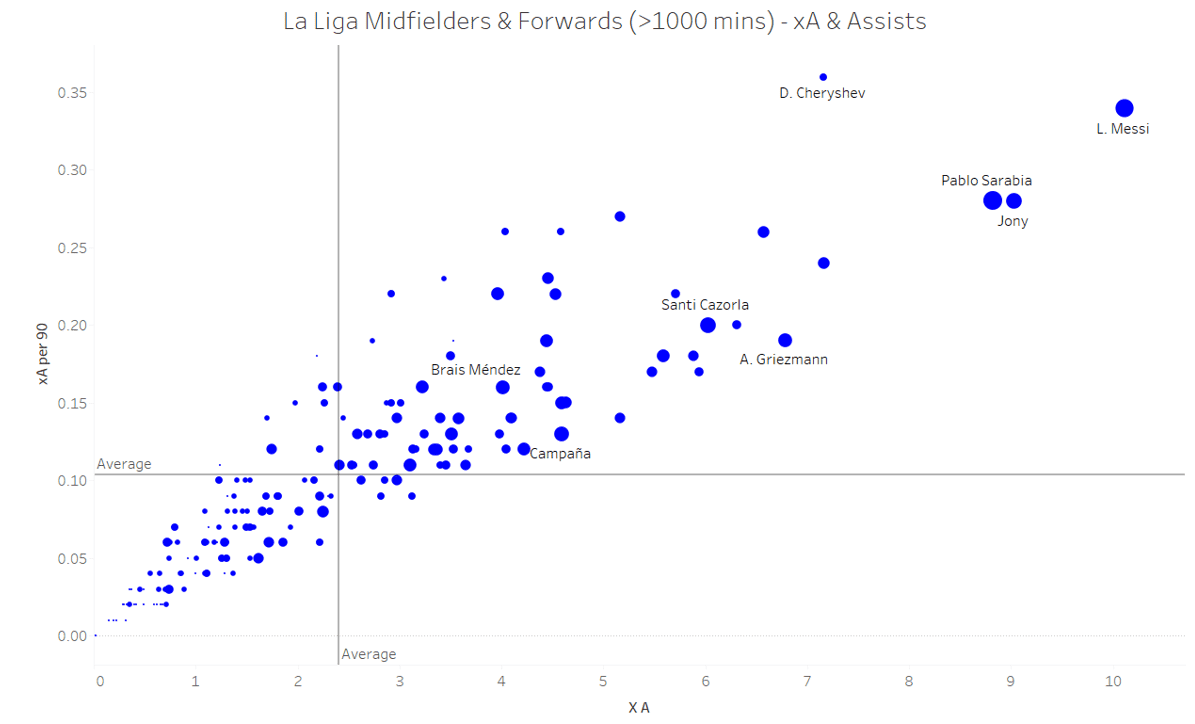
Here we can see that Cheryshev ranks fifth in terms of overall xA despite not registering 2,000 minutes of football. We can also see that he ranks as the top player in terms of xA per 90 minutes within La Liga, beating Messi, the imperious Argentinian who so often is the anomaly to the rule. What makes this all the more impressive is that the xA registered by Cheryshev does not include set pieces which can often bloat xA numbers. It is worth bearing in mind that Messi’s numbers will include set pieces, so this really is no mean feat. Now I’m not saying that Cheryshev will suddenly be putting up similar numbers to Messi, but it does beg the question of has he been underutilised at Valencia?
Let’s take a look at which games Cheryshev has produced his highest xA in. When looking at the data the eye is drawn to the games against Levante, Huesca and his parent club Villarreal as he recorded near to 0.9 xA in all games. These three games alone show Cheryshev to be overperforming his actual assists of 2 with an xA of 2.8.

So we can clearly see that Cheryshev is capable of putting up impressive numbers and plays a key role in creating chances for teammates. Now let’s try and understand from which part of the pitch he is creating these chances from. The graphic below depicts all of Cheryshev’s key passes in La Liga. Key passes are defined as a pass resulting in a shot on goal. The shaded area depicts the origin of the pass and the hollow area the destination, with assists highlighted in green.
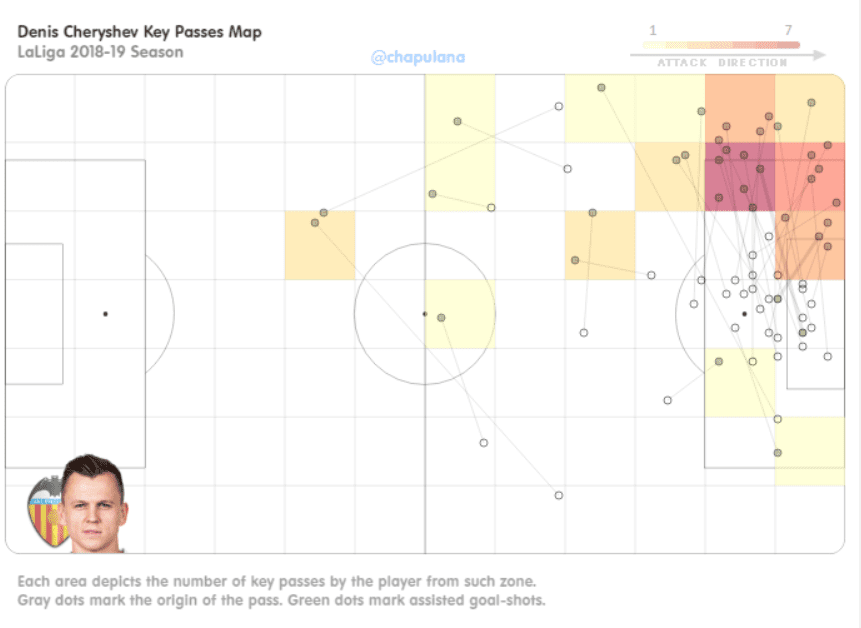
From the plot, it is clear to see that there is a clear area from which Cheryshev creates chances, almost exclusively on the left outside of the width of the six-yard box. The plot also suggests that he does not look to drift inside to create chances due to a disparity in chances created out wide in comparison to more centrally. This would suggest that Cheryshev looks to stay wide and create crossing opportunities, but is this really the case or merely a lazy assumption? Let’s take a look at the video in order to understand how he creates his chances.
How does Cheryshev look to create chances?
Here we can see Cheryshev against Barcelona, where he initially begins to drift wide to the left in order to receive the ball dragging Pique out to meet him.

The second image shows how Cheryshev uses a drop of the shoulder to off balance Pique and upon the shift of balance from the Catalan defender, Cheryshev pushes the ball into the open space creating time for him to deliver a cross.
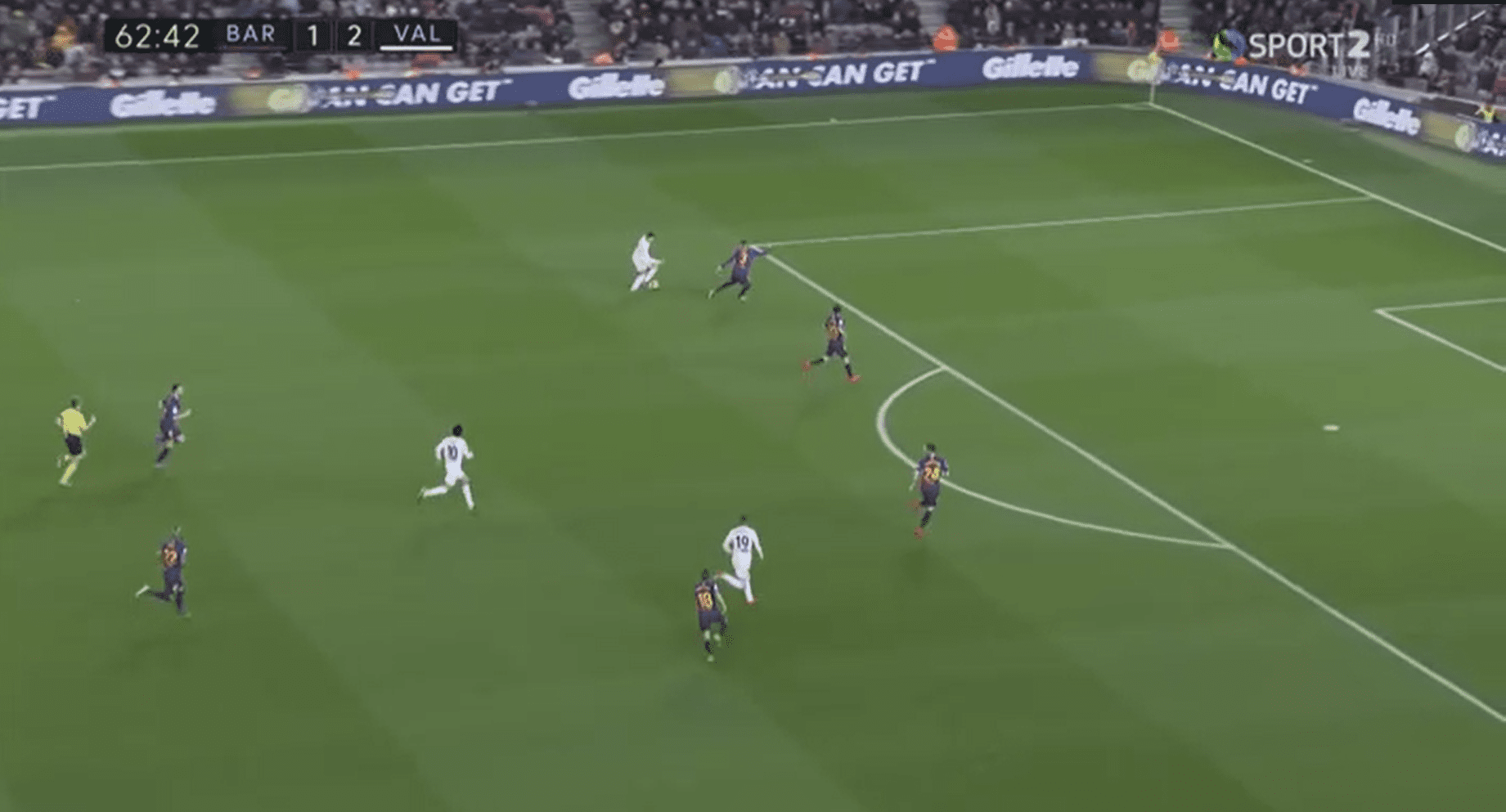
As Cheryshev is about to strike the ball we can see the target area that he wants to hit, the aptly named ‘corridor of uncertainty’ between the defensive line and the goalkeeper.
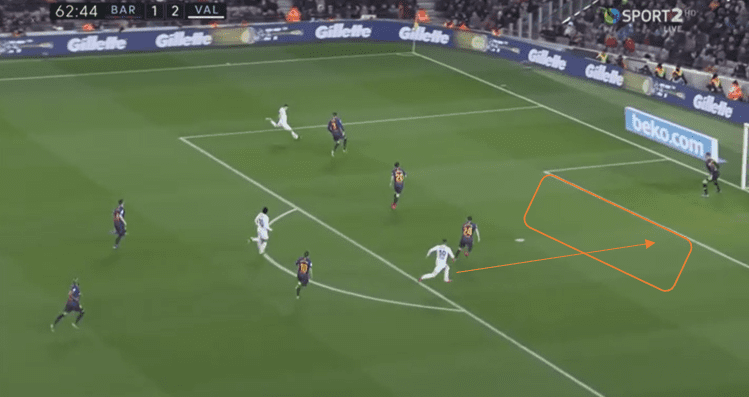
Finally, we can see how Cheryshev drives a low cross into the box between the defender and goalkeeper. This is the perfect example of the sort of chance that Cheryshev is capable of creating, using a combination of dribbling ability in a 1v1 situation and high-quality delivery.
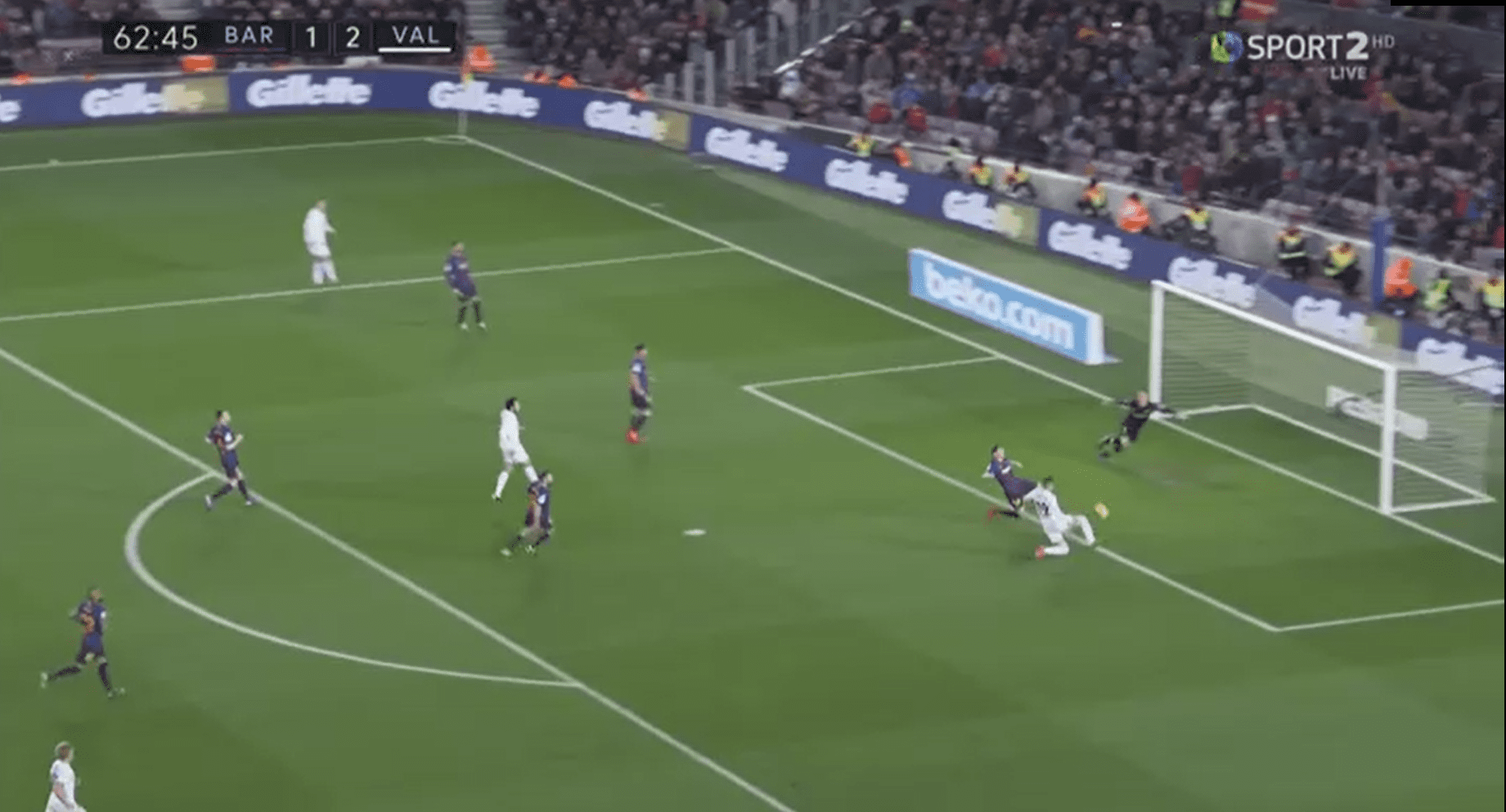
When reviewing Cheryshev’s key passes, low crosses were a real feature of his play. It is interesting that he looks to utilise this technique in order to create the best possible scoring scenario for his teammates, and subsequently goes some way to explaining why he records such a high xA per 90 minutes. Let’s take a look at a couple more scenarios which exemplify how Cheryshev utilises this technique.
Here we can see Cheryshev taking up a position wide on the left. It is interesting to see that he wants to receive the ball out wide and his run is not attacking the space in behind the full-back as many modern wingers do.
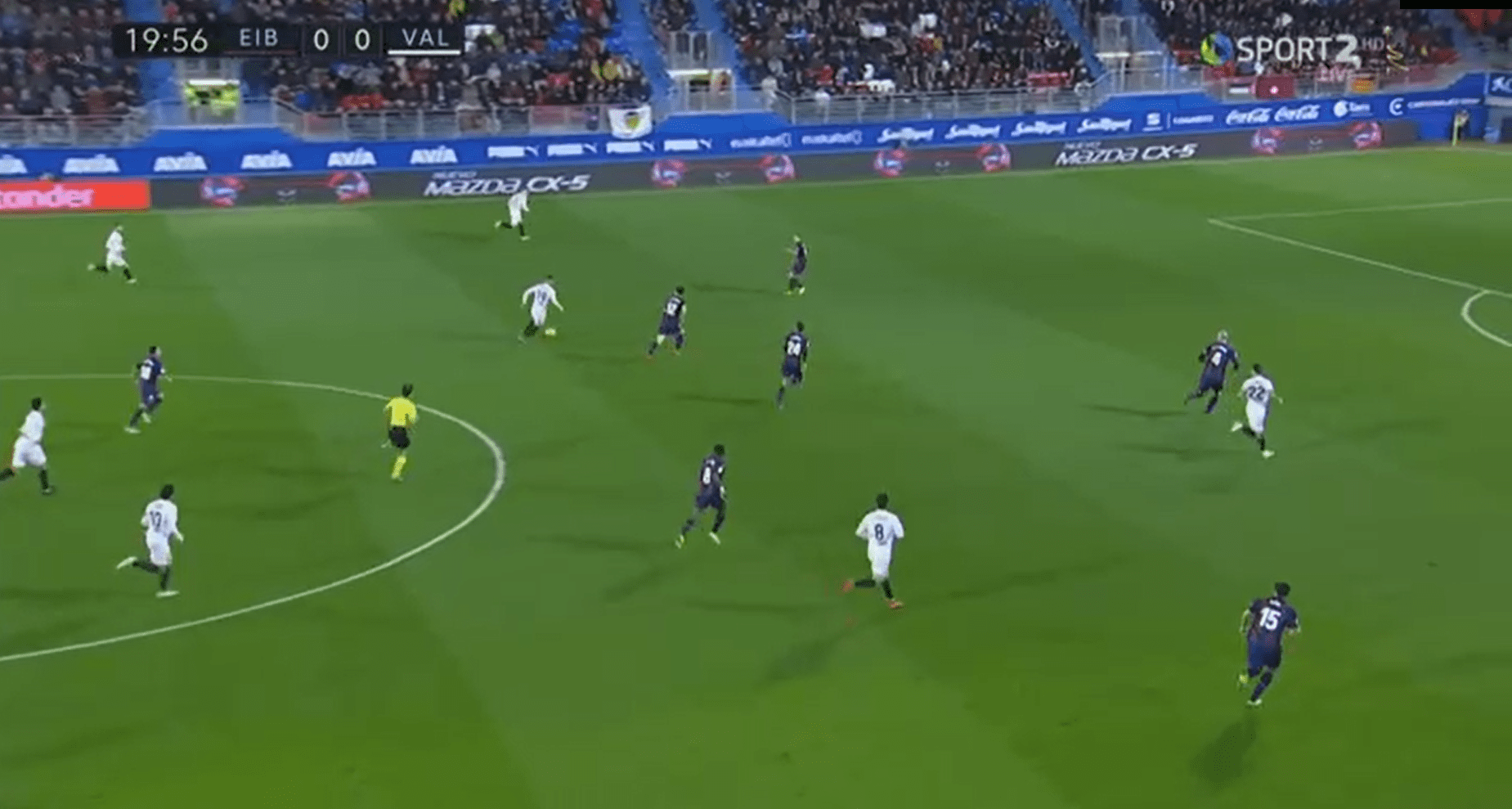
We’ve stopped the tape at the point when Cheryshev is about to strike the ball. It can be seen that the attacker is marked tightly, with the full-back reducing the crossing angle. There are also two runners arriving on the edge of the box, however, the weight of pass will need to be of a high quality to pick them out. It should also be noted that the centre-back’s body shape is not open as he runs back into position, thus, meaning he will struggle to change direction to intercept a pass behind him.
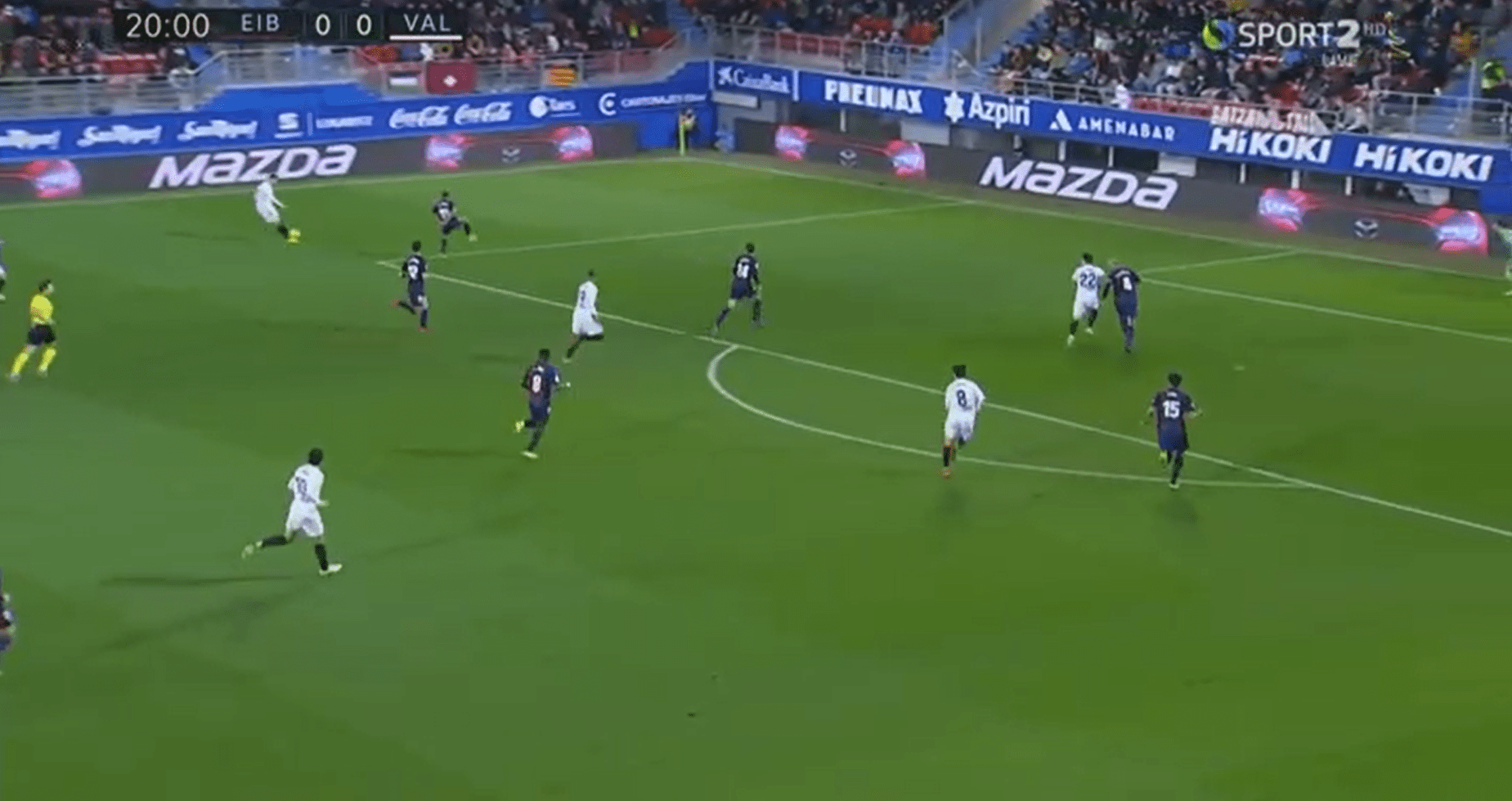
As we can see Cheryshev has once again utilised a low cross in order to pick out his man, playing the ball behind the defender making the recovery run. The quality of this cross should not be underestimated as it is in front of the attacker to move on to in order to strike.
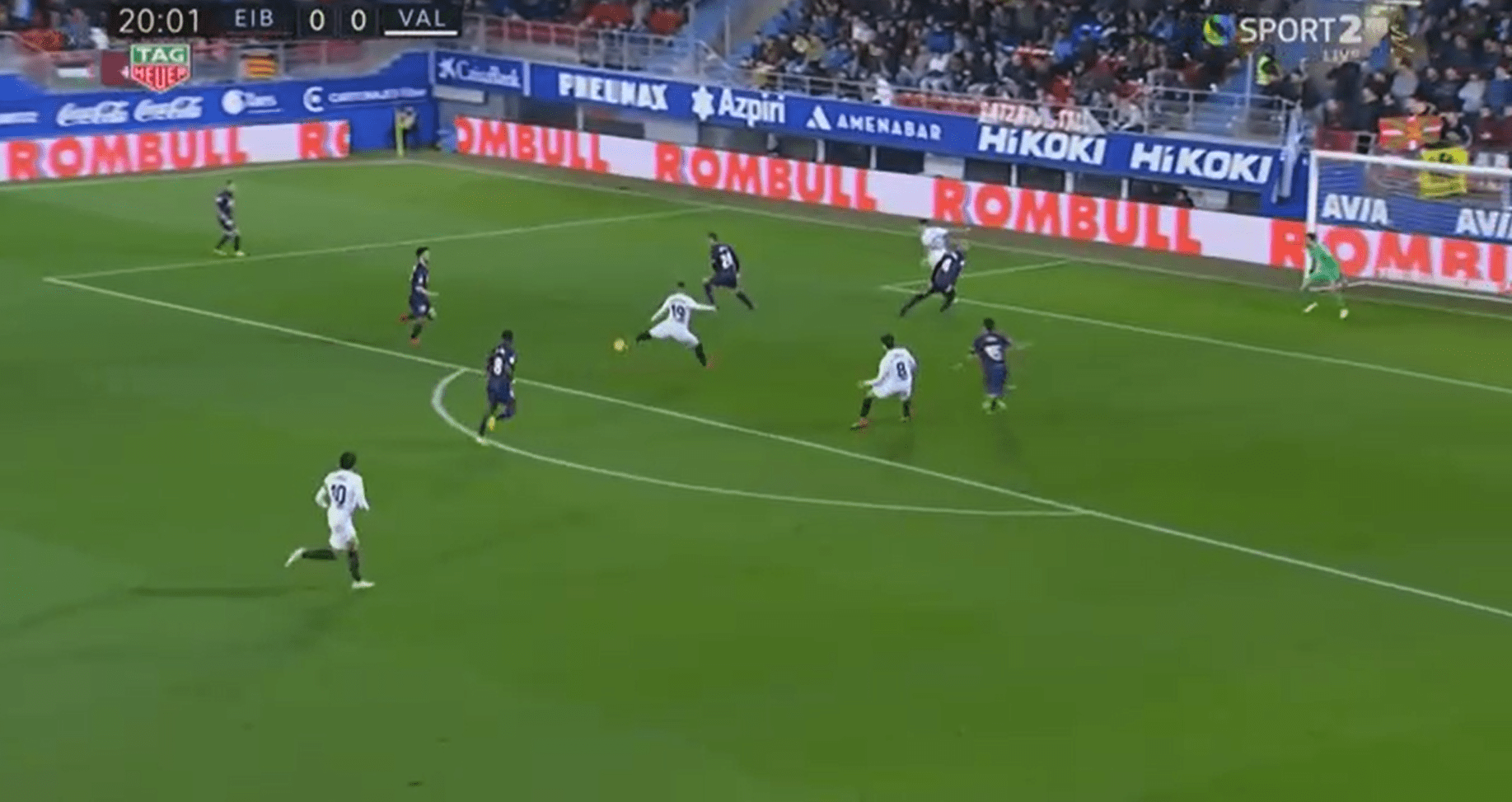
Here we can see Cheryshev’s starting position in the move as the midfielder collects the ball and moves into space.
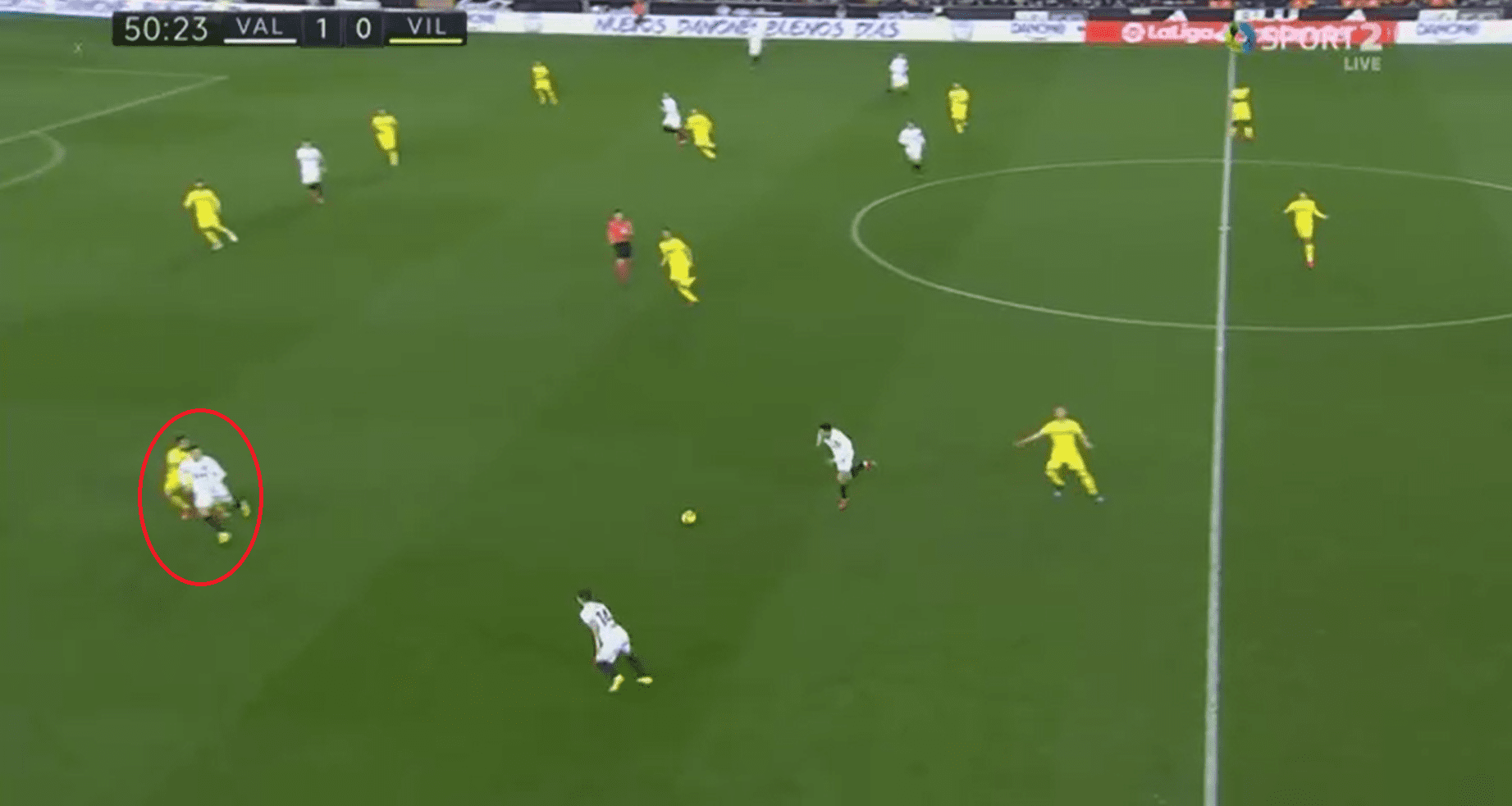
Once again he prefers to pull wide rather than attack the space in behind, between the full-back and centre-back as so many other wide forwards would do. In this instance, Cheryshev is afforded the time to deliver a cross, with the striker looking to make a run to the space at the near post.
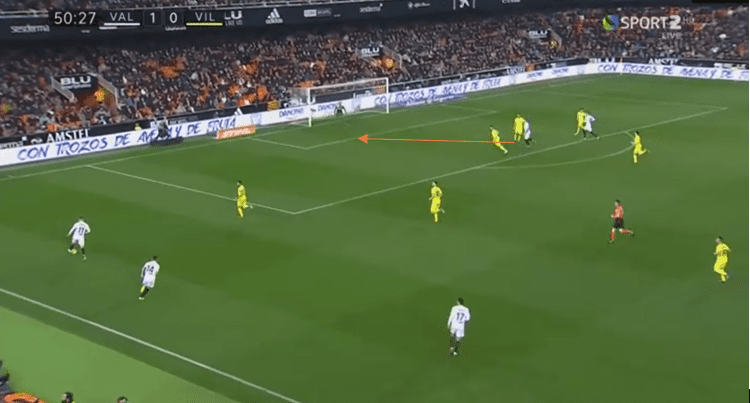
We can once again see that Cheryshev is able to utilise the low cross in order to provide a high-quality chance for his teammate, which eventually ends up hitting the post.
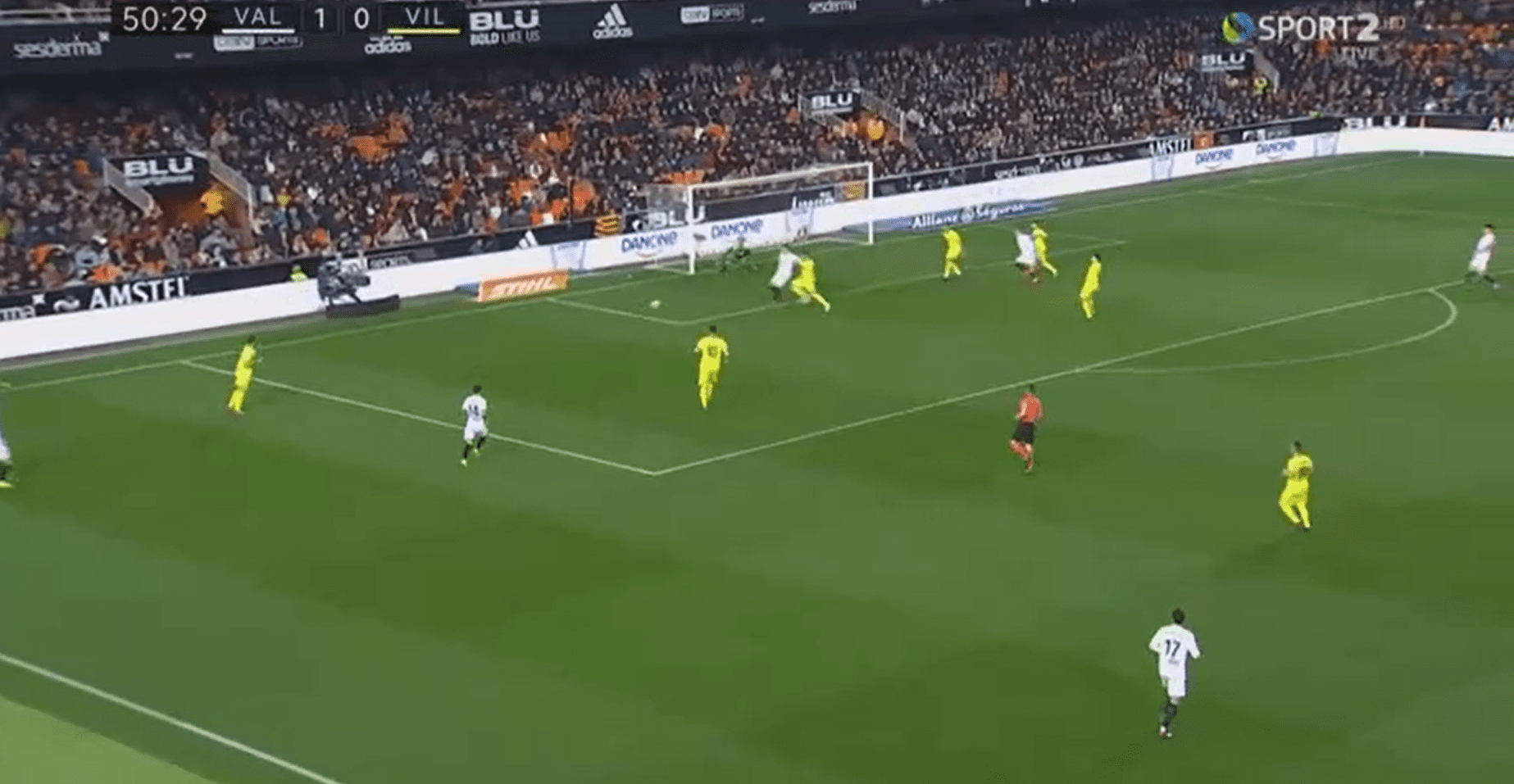
Conclusion
On the face of it when viewing the statistics Cheryshev appears to be a real outlier in the data, in particular as he ranks higher in xA per 90 minutes than Lionel Messi. His rank of fifth in overall xA in La Liga is an even more impressive feat considering the fact he has played less than 2,000 minutes this season. Having delved deeper into the data it is clear to see that Cheryshev has a preferred area of the pitch from where he likes to create. This preferred area is almost exclusively to the left of the width of the 6-yard box, highlighting how he prefers to create from wide rather than cutting inside. Having reviewed the footage of Cheryshev’s key passes, it is evident that he prefers to use low crosses in order to supply his teammates with scoring chances.
Cheryshev now faces the prospect of returning on loan to his parent club Villarreal. Given they will finish in the bottom half, will Valencia look to acquire his services permanently in the hope that his xA can be realised as actual assists next season? Or will Villarreal be able to utilise his untapped potential for their own gain?
If you love tactical analysis, then you’ll love the digital magazines from totalfootballanalysis.com – a guaranteed 100+ pages of pure tactical analysis covering topics from the Premier League, Serie A, La Liga, Bundesliga and many, many more. Buy your copy of the May issue for just ₤4.99 here, or even better sign up for a ₤50 annual membership (12 monthly issues plus the annual review) right here.

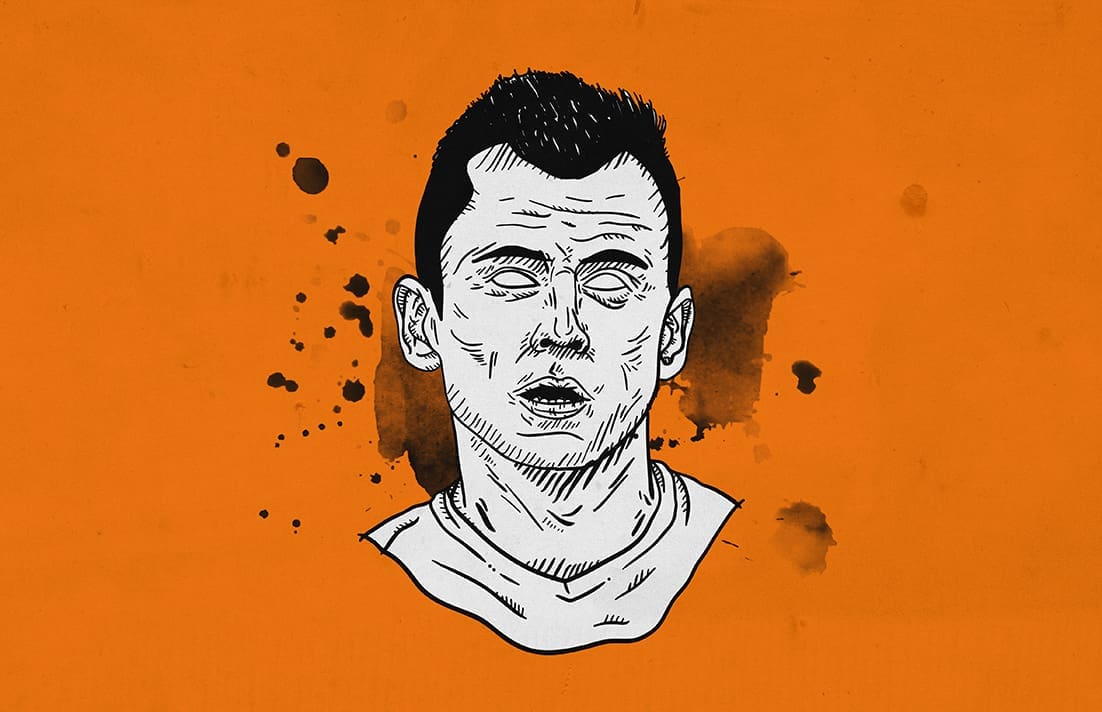




Comments